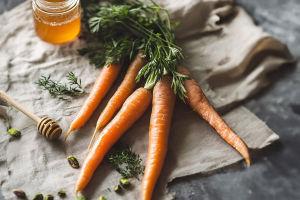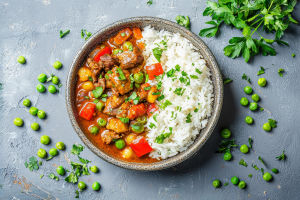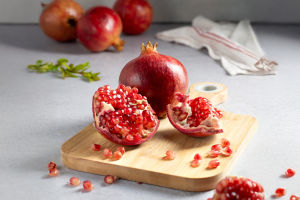When the weather starts to cool down, our food choices naturally begin to change too. We crave warmth, comfort, and richer flavors. That's where seasonal vegetables come in.
Choosing vegetables that grow best in autumn not only gives us better taste and nutrition, but also helps support local farms and the environment.
So, what veggies are at their best in autumn?
Let's walk through the top seasonal stars we should be eating this time of year.
Sweet potatoes: Comfort and color
Sweet potatoes are a fall favorite for good reason. They're rich in fiber, vitamins A and C, and have a naturally sweet, earthy flavor. We can roast them, mash them, or even toss them into warm salads. They help support our immune system and keep our energy steady as the days get shorter.
Pumpkins and squash: Autumn classics
Nothing says fall like pumpkins and their squash family cousins, like butternut and acorn squash. They're not just for decoration! These veggies are packed with antioxidants, including beta-carotene, which supports our eyes and skin.
Roasted squash is great as a side dish, in soups, or even in pasta. And don't throw away the seeds—roasted pumpkin seeds make a crunchy, healthy snack.
Brussels sprouts: Tiny but mighty
Brussels sprouts really shine in autumn. When roasted, they become tender with a slightly nutty flavor. These little green balls are rich in vitamin K, vitamin C, and fiber. If we sauté them with a bit of olive oil and garlic, they can turn into a dinner favorite—even for people who usually avoid greens!
Cabbage: Crunchy and versatile
Cabbage thrives in cooler weather and is super versatile. We can slice it for stir-fries, mix it into slaws, or stew it with spices for a warm, hearty side. Cabbage also supports digestion and offers vitamin B6, folate, and plenty of fiber.
Red cabbage, in particular, adds a beautiful pop of color to any dish and is slightly sweeter than the green variety.
Carrots: Sweet and satisfying
While carrots are available all year, they're especially sweet and crisp in fall. Cooler temperatures enhance their natural sugars, making them great for roasting, stews, or even raw snacking. Plus, they're packed with beta-carotene, which turns into vitamin A—great for our eyes and immune health.
Cauliflower: The white superstar
Cauliflower is one of the most flexible vegetables in our kitchen. In autumn, it's at its best—firm, flavorful, and easy to use in almost anything. We can roast it whole, turn it into a creamy soup, or mash it as a lighter option to potatoes.
It's low in calories but high in nutrients like vitamin C, vitamin K, and choline, which supports brain function.
Spinach and leafy greens
Cooler weather helps leafy greens like spinach, kale, and Swiss chard grow better and taste less bitter. They're full of iron, calcium, and antioxidants. A warm spinach stir-fry or a kale salad with roasted squash makes a perfect fall meal.
Buying greens in season means they're fresher, last longer, and pack in more nutrition.
How to shop smart for fall veggies
When we head to the market or grocery store, look for produce that feels firm, smells fresh, and has bright colors. If we're shopping at a local farmers' market, we can even ask the growers what's been freshly harvested.
Buying in season often means lower prices and better quality.
Let's enjoy the taste of autumn
Autumn is the perfect time to slow down, warm up, and enjoy all the fresh flavors nature has to offer. Seasonal vegetables not only taste better, but they also help us feel better—giving our bodies what they need in tune with the weather.
Lykkers, which autumn veggie do you love most? Are you more of a sweet potato fan or a Brussels sprouts roaster? Share your favorite fall recipes—we'd love to try them too!


